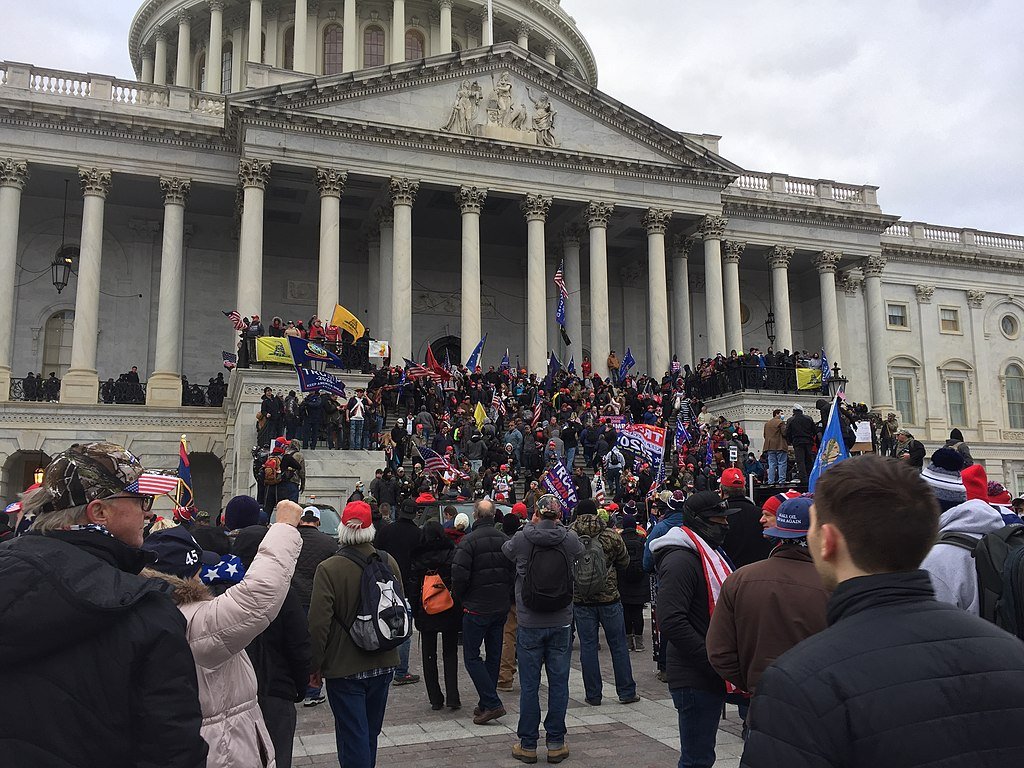9 January 2022
On Friday, the American Dialect Society selected insurrection as its Word of the Year for 2021, winning out over the combining form vax/vaxx in a runoff. The ADS has been selecting words of the year for 32 years, making it the longest running of these endeavors. The ADS is made up of linguists, lexicographers, editors, and others who study language either professionally or as serious amateurs. But despite the organization’s professional orientation, the WOTY is open to the public and is undertaken in a spirit of fun. The ADS does not claim that this is any kind of scholarly endeavor.
For the second year in a row, the WOTY selection was conducted online, and over three hundred people actively participated via Zoom. The day prior to the public meeting, a smaller, invited group of about fifty met online to nominate words in the various categories. Nominations “from the floor” were also accepted in the public meeting. I participated in both meetings. The full list of nominees and vote totals is in the ADS press release. You can also watch a recording of the proceedings on YouTube.
Other organizations take a more data-driven approach to their WOTY selections. For instance, both Merriam-Webster and Oxford University Press base their selection on the word that received the greatest spike in lookups on their online dictionaries, after filtering out the “evergreen” words that are looked up year after year. Both of these dictionaries selected variations on vaccine as their WOTY, vaccine for Merriam-Webster and vax for Oxford. My own take on WOTY 2021 is here.
I’m not going to give a comprehensive run-down of the ADS selections as I’ve done in past years. You can read the ADS press release for that. Instead, I’m offering some observations on the process and the choices.
When ADS kicked off the WOTY phenomenon over thirty years ago, it was intended as a fun exercise that might generate some publicity for the organization. As to the latter, it has succeeded beyond all expectations of that original group. It was never intended as a scholarly exercise, and that needs to be kept in mind. The ADS process is highly subjective, reflecting the tastes, biases, and agendas of the participants.
This year, I paid attention to the chat that was happening in Zoom alongside the audio/video feed. For the first time, I got a glimpse into what a large number of the participants were thinking. Very few were thinking as linguists, as professional scholars of language. That’s an observation, not a criticism. The process isn’t one of scholarly rigor, so why should people pretend that it is? Besides, it was clear that everyone was having a lot of fun. (The discussion of glizzy gobbling had me literally laughing out loud.)
For instance, one person said that while CRT/critical race theory was clearly an important term, they wouldn’t be voting for it as political term of the year because they didn’t want to highlight yet again the racist appropriation of the term. That’s an opinion I share and support, but it’s an opinion based on political rather than linguistic factors. CRT did not win, not even making it into the runoff. The winner in that category was insurrection in a runoff with Big Lie. Both of these are better choices on both political and linguistic grounds.
Another voiced the opinion that they were voting for variant because the experience with COVID-19 variants made it easier for them to explain the concept of linguistic variation to their students. I’m not sure how the imprimatur of the ADS would make the teaching any easier, but okay, that’s as good a reason as any.
Another surprise to me was the groundswell of support for Great Resignation and antiwork. While I was aware of the growing opposition to exploitative labor practices, I did not expect so much vocal support for these terms. I was unfamiliar with antiwork as a term (but not as a concept) before Friday, and it was nominated for WOTY “from the floor.” It probably shouldn’t have been a surprise though. ADS, like many organizations made up of university professors and grad students, skews more liberal than the population as a whole, plus many of those participating were younger than me.
But as an old fart, the biggest shock was the informal (in past years slang) category. I had never heard of any of the nominees. I guess I’m just cheugy.
Another new term to me was hard pants, but I fully support it. It’s simultaneously useful and silly. Ditto for copium, useful and playful.
There were no separate hashtag or emoji categories this year, another good change. I don’t object to hashtags or emojis. To the contrary, I like seeing them in contention as regular “words.” No emojis were nominated this year, but #FreeBritney won the digital word category, a worthy win.
I had my own biases and blind spots, and I’m sure every other participant had the same. I guess my point is that the WOTY should be taken as a bit of fun and a launching point for discussion of the past year and the vocabulary it generated and not as a serious pronouncement by experts from on high.
















